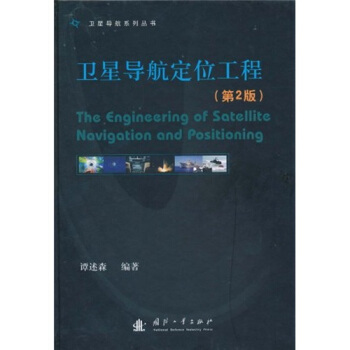![引力 [AN INTRODUCTION TO EINSTEINS GENERAL RELATIVITY]](https://pic.tinynews.org/10175889/f6912b33-e7b1-4dfe-9c31-f6b50b170195.jpg)

具体描述
内容简介
Einstein的广义相对论是现代物理的基石。它包括了大量讲述时空的前沿话题,黑洞、重力波以及宇宙学。随着广义相对论越来越成为同时代物理和天文学的中心,其在本科教育中的地位也显得尤为重要。这本全新的教材很适合本科生作为了解该课程的基础理论。物理优先、数学理论尽可能少、大量的应用实例,作者为物理学家和对该学科感兴趣的读者自然顺畅的讲述了这门学科。读者对象:《引力》适用于物理专业的本科生,研究生以及对该学科感兴趣的广大读者。
目次:(第一部分)牛顿物理和狭义相对论中的时空:引力物理;几何作为物理;牛顿物理中的空间;时间和引力;狭义相对论原理;狭义相对论力学; (第二部分)广义相对论的弯曲时空:引力作为几何;弯曲时空的描述;测地线;球形星体外的几何;广义相对论的太阳系检验;实用相对论引力;引力坍缩和黑洞;天体物理学黑洞;微小转动;旋转黑洞;引力波;宇宙观察;宇宙学模型;什么是宇宙以及为什么;(第三部分)Einstein方程:数学部分;曲率和Einstein方程;曲率源;引力波发射;相对论星体。
内页插图
目录
PrefacePART I SPACE AND TIME IN NEWTONIAN PHYSICS AND SPECIAL RELATIVITY
1 Gravitational Physics
2 Geometry as Physics
2.1 Gravity Is Geometry
2.2 Experiments in Geometry
2.3 Different Geometries
2.4 Specifying Geometry
2.5 Coordinates and Line Element
2.6 Coordinates and Invariance
3 Space, Time, and Gravity in Newtonian Physics
3.1 Inertial Frames
3.2 The Principle of Relativity
3.3 Newtonian Gravity
3.4 Gravitational and Inertial Mass
3.5 Variational Principle for Newtonian Mechanics
4 Principles of Special Relativity
4.1 The Addition of Velocities and the Michelson-Morley Experiment
4.2 Einsteins Resolution and Its Consequences
4.3 Spacetime
4.4 Time Dilation and the Twin Paradox
4.5 Lorentz Boosts
4.6 Units
5 Special Relativistic Mechanics
5.1 Four-Vectors
5.2 Special Relativistic Kinematics
5.3 Special Relativistic Dynamics
5.4 Variational Principle for Free Particle Motion
5.5 Light Rays
5.6 Observers and Observations
PART Ⅱ THE CURVED SPACETIMES OF GENERAL RELATIVITY
6 Gravity as Geometry
6.1 Testing the Equality of Gravitational and Inertial Mass
6.2 The Equivalence Principle
6.3 Clocks in a Gravitational Field
6.4 The Global Positioning System
6.5 Spacetime Is Curved
6.6 Newtonian Gravity in Spacetime Terms
7 The Description of Curved Spacetime
7.1 Coordinates
7.2 Metric
7.3 The Summation Convention
7.4 Local Inertial Frames
7.5 Light Cones and World Lines
7.6 Length, Area, Volume, and Four-Volume for Diagon Metrics
7.7 Embedding Diagrams and Wormholes
7.8 Vectors in Curved Spacetime
7.9 Three-Dimensional Surfaces in Four-Dimensional Spacetime
8 Geodesics
8.1 The Geodesic Equation
8.2 Solving the Geodesic Equation——-Symmetries and Conservation Laws
8.3 Null Geodesics
8.4 Local Inertial Frames and Freely Falling Frames
9 The Geometry Outside a Spherical Star
9.1 Schwarzschild Geometry
9.2 The Gravitational Redshift
9.3 Particle Orbits——Precession of the Perihelion
9.4 Light Ray Orbits——The Deflection and Time Delay of Light
10 Solar System Tests of General Relativity
10.1 Gravitational Redshift
10.2 PPN Parameters
10.3 Measurements of the PPN Parametery
10.4 Measurement of the PPN Parameter B-Precession of Mercurys Perihelion
11 Relativistic Gravity in Action
11.1 Gravitational Lensing
11.2 Accretion Disks Around Compact Objects
11.3 Binary Pulsars
12 Gravitational Collapse and Black Holes
12.1 The Schwarzschild Black Hole
12.2 Collapse to a Black Hole
12.3 Kruskal-Szekeres Coordinates
12.4 Nonspherical Gravitational Collapse
13 Astrophysical Black Holes
13.1 Black Holes in X-Ray Binaries
13.2 Black Holes in Galaxy Centers
13.3 Quantum Evaporation of Black Holes——Hawking Radiation
14 A Little Rotation
14.1 Rotational Dragging of Inertial Frames
14.2 Gyroscopes in Curved Spacetime
14.3 Geodetic Precession
14.4 Spacetime Outside a Slowly Rotating Spherical Body
14.5 Gyroscopes in the Spacetime of a Slowly Rotating Body
14.6 Gyros and Freely Falling Frames
15 Rotating Black Holes
15.1 Cosmic Censorship
15.2 The Kerr Geometry
15.3 The Horizon of a Rotating Black Hole
15.4 Orbits in the Equatorial Plane
15.5 The Ergosphere
16 Gravitational Waves
16.1 A Linearized Gravitational Wave
16.2 Detecting Gravitational Waves
16.3 Gravitational Wave Polarization
16.4 Gravitational Wave Interferometers
16.5 The Energy in Gravitational Waves
17 The Universe Observed
17.1 The Composition of the Universe
17.2 The Expanding Universe
17.3 Mapping the Universe
18 Cosmological Models
18.1 Homogeneous, Isotropic Spacetimes
18.2 The Cosmological Redshift
18.3 Matter, Radiation, and Vacuum
18.4 Evolution of the Flat FRW Models
18.5 The Big Bang and Age and Size of the Universe
18.6 Spatially Curved Robertson-Walker Metrics
18.7 Dynamics of the Universe
19 Which Universe and Why?
19.1 Surveying the Universe
19.2 Explaining the Universe
PART III THE EINSTEIN EQUATION
20 A Little More Math
20.1 Vectors
20.2 Dual Vectors
20.3 Tensors
20.4 The Covariant Derivative
20.5 Freely Falling Frames Again
21 Curvature and the Einstein Equation
21.1 Tidal Gravitational Forces
21.2 Equation of Geodesic Deviation
21.3 Riemann Curvature
21.4 The Einstein Equation in Vacuum
21.5 Linearized Gravity
22 The Source of Curvature
22.1 Densities
22.2 Conservation
22.2 Conservation of Energy-Momentum
22.3 The Einstein Equation
22.4 The Newtonian Limit
23 Gravitational Wave Emission
23.1 The Linearized Einstein Equation with Sources
23.2 Solving the Wave Equation with a Source
23.3 The General Solution of Linearized Gravity
23.4 Production of Weak Gravitational Waves
23.5 Gravitational Radiation from Binary Stars
23.6 The Quadrupole Formula for the Energy Loss in Gravitational Waves
23.7 Effects of Gravitational Radiation Detected in a Binary Pulsar
23.8 Strong Source Expectations
24 Relativistic Stars
24.1 The Power of the Pauli Principle
24.2 Relativistic Hydrostatic Equilibrium
24.3 Stellar Models
24.4 Matter in Its Ground State
24.5 Stability
24.6 Bounds on the Maximum Mass of Neutron Stars
APPENDIXES
A Units
A.1 Units in General
A.2 Units Employed in this Book
B Curvature Quantities
C Curvature and the Einstein Equation
D Pedagogical Strategy
D.1 Pedagogical Principles
D.2 Organization
D.3 Constructing Courses
Bibliography
Index
前言/序言
~Einsteins relativistic theory of gravitation——general relativity——will shortly be acentury old. At its core is one of the most beautiful and revolutionary conceptionsof modem science——the idea that gravity is the geometry of four-dimensionalcurved spacetime. Together with quantum theory, general relativity is one of thetwo most profound developments of twentieth-century physics. General relativity has been accurately tested in the solar system. It underliesour understanding of the universe on the largest distance scales, and is centralto the explanation of such frontier astrophysical phenomena as gravitational col-lapse, black holes, X-ray sources, neutron stars, active galactic nuclei, gravita-tional waves, and the big bang. General relativity is the intellectual origin of manyideas in contemporary elementary particle physics and is a necessary prerequisiteto understanding theories of the unification of all forces such as string theory. An introduction to this subject, so basic, so well established, so central to sev-eral branches of physics, and so interesting to the lay public is naturally a partof the education of every undergraduate physics major. Yet teaching general rel-ativity at an undergraduate level confronts a basic problem. The logical order ofteaching this subject (as for most others) is to assemble the necessary mathemati-cal tools, motivate the basic defining equations, solve the equations, and apply thesolutions to physically interesting circumstances. Developing the tools of differ-ential geometry, introducing the Einstein equation, and solving it is an elegant andsatisfying story. But it can also be a long one, too long in fact to cover both thatand introduce the many con~~temporary applications in the time that is typicallyavailable for an introductory undergraduate course. Gravity introduces general relativity in a different order. The principles onwhich it is based are discussed at greater length in Appendix D, but essentiallythe strategy is the following: The simplest physically relevant solutions of theEinstein equation are presented first, without derivation, as spacetimes whose ob-servational consequences are to be explored by the study of the motion of testparticles and light rays in them. This brings the student to the physical phenom-ena as quickly as possible. It is the part of the subject most directly connected toclassical mechanics, and requires the minimum of new mathematical ideas. TheEinstein equation is introduced later and solved to show how these geometriesoriginate. A course for junior or senior level physics students based on these principlesand the first two parts of this book has been part of the undergraduate curriculumat the University of California, Santa Barbara for over twenty-five years. It works.~用户评价
一本名为《引力》的书,我最近偶然翻阅了一下,虽然我对爱因斯坦的广义相对论知之甚少,但书名本身就充满了神秘和吸引力。我好奇的是,这本书会如何向一个门外汉解释这个如此抽象的概念?它是否会使用大量的数学公式,还是更倾向于用生动的比喻和图像来辅助理解?我尤其期待作者能否以一种引人入胜的方式,将引力这个我们习以为常的现象,提升到宇宙尺度上的深刻理解。它会带我穿越时空,感受黑洞的拉扯,还是解释宇宙膨胀的奇妙动力?我希望这本书能像一个睿智的朋友,耐心地引导我一步步揭开宇宙的奥秘,而不是给我一堆难以消化的理论。想象一下,如果我能因此对夜空中闪烁的星辰有了更深的感悟,能理解它们为何会以如此精确的轨道运行,那将是一种多么美妙的体验。这本书,或许就是通往这种启迪的一扇门。
评分这本书《引力》,我希望它能成为我打开广义相对论大门的一把钥匙,而不是一堵高墙。我对它的期待在于,它能否用一种非常“接地气”的方式,将爱因斯坦那颠覆性的思想传递给我。想象一下,如果我能够通过这本书,理解为什么在极强的引力场中,时间会流逝得更慢,或者黑洞是如何产生的,那将是一种多么令人振奋的体验。我希望书中不会充斥着只有专业人士才能懂的术语,而是会用最清晰、最形象的语言来解释那些核心概念,比如“等效原理”或者“引力场方程”的意义。我期待它能够引发我更深层次的思考,让我能够站在一个更宏观的角度去理解宇宙的运行机制,而不仅仅是将引力看作是我们日常生活中一个被动的存在。
评分对于《引力》这本书,我最大的期待是它能否成功地将一个通常被认为极其复杂的科学理论,以一种清晰且易于理解的方式呈现给普通读者。我希望它不是那种堆砌着晦涩术语和繁复公式的学术著作,而是能够通过富有想象力的类比和直观的插图,将广义相对论的精髓“软着陆”到我的认知中。例如,我会很想知道,作者是如何解释“时空弯曲”这个核心概念的?是用一个被拉伸的橡皮膜上滚动的球来形象化,还是有更巧妙的比喻?我希望这本书能让我明白,引力并非一种“力”在推拉,而是时空本身的几何结构所决定的运动轨迹。此外,我对于书中是否会涉及到广义相对论的实际应用或者科学史的背景故事也充满兴趣。了解这个理论是如何一步步被提出,被验证,以及它如何改变了我们对宇宙的认知,会让我对这个概念有更立体的感受。
评分我希望《引力》这本书能够提供一个全新的视角来审视我们周遭的世界,甚至整个宇宙。它不应该是一本枯燥的教科书,而是更像一本引人入胜的科普读物,用一种诗意而又严谨的方式,探索引力的奥秘。我期待书中能够描绘出引力如何塑造星系的形成,如何影响着光线的传播,以及它在宇宙演化过程中扮演的不可或缺的角色。如果作者能够用生动的语言,将那些抽象的数学概念转化为可以想象的画面,例如,将时空的弯曲比作一张被物体压实的网,我就能够更好地理解其中的原理。我希望这本书能够点燃我对宇宙的好奇心,让我不再仅仅满足于表面的理解,而是能够更深入地去探究那些隐藏在现象背后的深刻规律。
评分我带着一种既好奇又略带忐忑的心情去接触《引力》这本书。我对爱因斯坦的理论总是敬畏三分,总觉得那是一个高不可攀的智力高峰。所以,我希望这本书能够成为我的“引路人”,它不要上来就抛出一堆我无法理解的方程,而是能循序渐进,从最基本的概念讲起。比如,它会如何解释牛顿的万有引力定律和爱因斯坦的广义相对论之间的根本区别?我希望作者能用一种引人入胜的叙事方式,带领我领略这个科学史上的伟大飞跃。我特别想知道,书中是否会探讨一些有趣的宇宙现象,比如引力透镜效应,或者是黑洞视界附近的奇特景象,并尝试用相对论来解释它们。如果这本书能够让我读完之后,不再仅仅将引力看作是把我们钉在地面上的那股力量,而是能体会到它在宇宙尺度上的宏大作用,那将是我最大的收获。
评分没来得及看,据说某位或诺奖的人推荐。
评分很不错的一本书,送货速度也很快。
评分挺好!挺好!挺好!挺好!挺好!
评分好
评分《引力》适用于物理专业的本科生,研究生以及对该学科感兴趣的广大读者。Einstein的广义相对论是现代物理的基石。它包括了大量讲述时空的前沿话题,黑洞、重力波以及宇宙学。随着广义相对论越来越成为同时代物理和天文学的中心,其在本科教育中的地位也显得尤为重要。这本全新的教材很适合本科生作为了解该课程的基础理论。物理优先、数学理论尽可能少、大量的应用实例,作者为物理学家和对该学科感兴趣的读者自然顺畅的讲述了这门学科。
评分好!!!!!!!!!!
评分很喜欢深入浅出的书籍大致翻了翻,数学内容较多,和另一本英文引力对应看,毕竟一个重理论,一个重数学,都是必要的。很喜欢深入浅出的书籍大致翻了翻,数学内容较多,和另一本英文引力对应看,毕竟一个重理论,一个重数学,都是必要的。很喜欢深入浅出的书籍大致翻了翻,数学内容较多,和另一本英文引力对应看,毕竟一个重理论,一个重数学,都是必要的。
评分很喜欢深入浅出的书籍大致翻了翻,数学内容较多,和另一本英文引力对应看,毕竟一个重理论,一个重数学,都是必要的。当然这些都是针对新手来说的,若有基础的话可以只参考这本!
评分很不错的一本书,送货速度也很快。
相关图书
本站所有内容均为互联网搜索引擎提供的公开搜索信息,本站不存储任何数据与内容,任何内容与数据均与本站无关,如有需要请联系相关搜索引擎包括但不限于百度,google,bing,sogou 等
© 2025 book.tinynews.org All Rights Reserved. 静思书屋 版权所有


















![可压缩流的大涡模拟方法 [Large Eddy Simulation for Compressible Flows(Scientific Computation)] pdf epub mobi 电子书 下载](https://pic.tinynews.org/11314926/rBEhWlIxh_8IAAAAAADeBFqo-GsAADFiAP_GwoAAN4c643.jpg)

